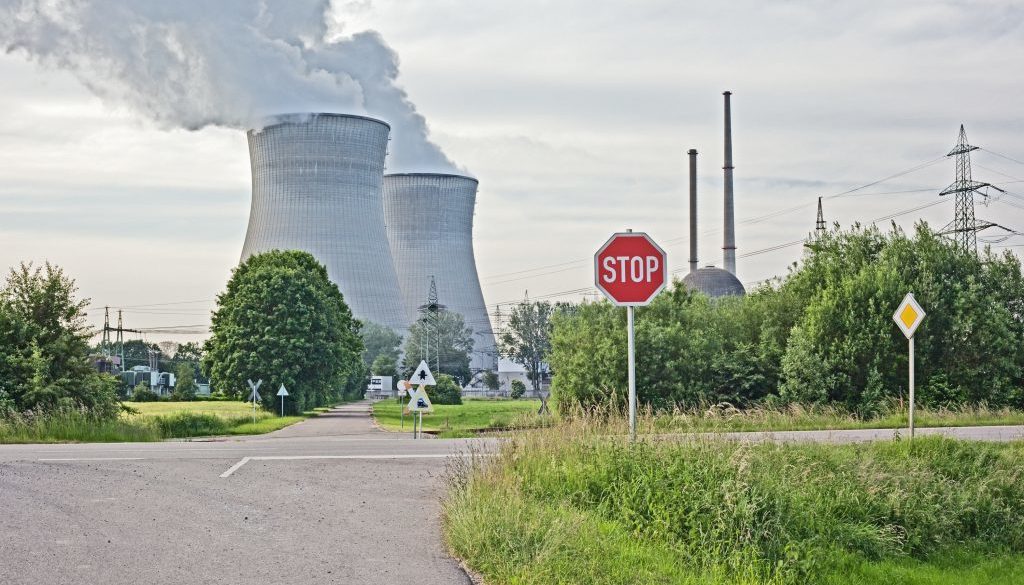Perry’s Odd Definition of Progress on Nuclear Waste
By Caroline Reiser, Natural Resources Defense Council
After months of suspense, Energy Secretary Rick Perry finally confirmed he will resign, boasting in a farewell tweet that under his leadership the Department of Energy “made environmental progress unseen for decades cleaning up the legacy of the Manhattan Project.”
—What’s that now?
Where exactly are the “numerous” legacy sites that Perry claims the Department tackled? All the Department of Energy has done under Perry is weaken standards and renege on promises by finding ways to abandon the world’s most toxic chemical and radioactive waste in place.
To give a brief history of the legacy Perry is referring to, the Manhattan Project is the name of the World War II era research and development effort that lead to the first several nuclear weapons, including those used to destroy Hiroshima and Nagasaki. In the atomic arms race of the Cold War, the Department of Energy and its predecessor agencies continued to design, test, and manufacture nuclear weapons but on a vaster scale—ultimately manufacturing over 30 thousand nuclear weapons.
Making nuclear weapons is not a clean business. Every country that has built a nuclear arsenal has harmed its own people and environment in the process. Nuclear production created a so-called “legacy” of profoundly contaminated radiological and chemical waste sites. There are dozens of these legacy waste sites across the United States; the largest three are the Idaho National Engineering and Environmental Laboratory, the South Carolina Savannah River Site, and the Washington Hanford site (which many consider one of the most contaminated sites in the Western Hemisphere).
To give you a picture of the scale in terms of size and danger, the Hanford site hosts 177 tanks. The tanks range from 55,000 gallons to more than a million gallons of radioactive and chemical waste each. That’s from about 20 semi-trucks full to about two Olympic sized swimming pools. And even brief exposure to a small portion of that waste can be deadly.
So what happened at these sites under Perry? Not much.
The most far-reaching action the Department of Energy took under Secretary Perry was to give itself permission to “reclassify” highly toxic radioactive waste. The Department’s new stance is that it can magically decide that certain High-Level Wasteis now Low-Level Waste without oversight from the Environmental Protection Agency, states, or tribes. With this authority, the Department of Energy no longer has to permanently isolate from the environment High-Level Waste, but instead can abandon hundreds of gallons of the most toxic waste at sites like Hanford. So really the only way Perry could be said to have cleaned up this toxic waste is by “recategorizing” it as something less dangerous than it is, and then (metaphorically) washing his hands of it.
The Perry-led Department of Energy will also be remembered for breaking promises. In addition to the promises the Department is breaking by reclassifying High-Level Waste, the Department is also breaking promises to clean up smaller sites as well. For example, the Santa Susana Field Laboratory sits in the golden hills of California, right on the outskirts of Los Angeles’s urban sprawl. In 2010, the Energy Department agreed to clean up the site to what’s called “background levels,” meaning the normal levels of radiation one could expect to find at the site before industry intervened. But the Perry Energy Department decided this agreement didn’t matter – it now plans to leave in place the vast majority of the contamination and to act without consent from California. Both Washington and California are pushing back against the Department of Energy’s broken promises. And it’s clear that if the Department gets away with it at these sites, it will do the exact same thing at other sites across the country.
So, for Secretary Perry’s tweet to be true, he must have a strange definition of “progress.” Maybe he means progress in abandoning the Department of Energy’s obligation to clean up the mess it made. Maybe he means progress in speeding up transferring the responsibility of managing highly toxic sites back to states, tribes, and local communities. Maybe he means progress in cutting corners to favor cost over health and safety. All I can say is that I hope the next Secretary and I have a more similar idea of what progress looks like.
The Department of Energy can do better. President Trump has already nominated Dan Broulliette as a replacement for Perry. If Broulliette wants to make actual progress on America’s nuclear waste legacies, he needs to stop wasting time trying to get away with doing less – do the work and do it right. Given the track record of the last few years, there’s ample reason for skepticism. But I would love to be proven wrong.

